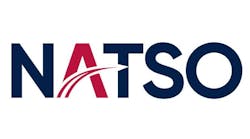As the 2010 compliance deadline approaches, Navistar says that the company is “more confident than ever” about its decision to go with an all-EGR solution rather than joining the other truck OEMs that have taken the SCR path to meeting the stricter 2010 emissions limits. “As time goes by, we feel better and better about where we are,” says Tim Schick, director of business and product strategy for Navistar's Engine Group.
“We've used the high-pressure, common-rail system that we developed with Caterpillar on our engines since the mid-1990s,” Schick notes. “Now we have fifteen years of experience with that technology, fifteen years of learning. We made our EGR choice based upon that experience.
“The high-pressure, common-rail system allows us to program the engine to develop high fuel injection pressure even at low speeds. Fuel under high pressure has lots of surface area; it is almost a vapor, and that is what increases its ability to burn,” he says. “That is really what enables EGR to work. The key to success is deciding what pressures you want and then programming for that. It is a very time-intensive process.”
According to Schick, problems with early-generation EGR systems, specifically with excessive soot, were left behind some time ago. “Soot is the result of incomplete combustion,” he says. “It is not an issue for us now, thanks to better combustion and ultra-low sulfur diesel, which has dramatically fewer impurities in it.”
In the near future, Navistar plans to unveil the first of its engines [a high-volume model] that will produce just 0.5 g/bhp-hr. of NOx, well below the current 1.2 limit, Schick notes. The company's MaxxForce 7 V8 engine, the MaxxForce 10 and DT models [the old I-6 line], and the big bore engines will also be operating at the 0.5 g/bhp-hr. NOx level by Jan. 1, 2010.
“We are on a continuum in this process,” he says. “For us there is no line between 2007 and 2010; we have just kept testing trucks and refining the EGR system and we will continue to do so until we reach the required 0.2 NOx g/bhp-hr. level. We also expect to hold to the current maintenance intervals, and the new engines won't run differently, sound differently or use more fuel than existing models.”
Navistar will use emissions credits the company has earned by producing some engines below current EPA standards to buy extra time for fine-tuning the programming on the new engines, according to Schick. “Our earned credits will allow us to keep on refining engine programming past the Jan. 1, 2010, compliance deadline,” he says. “The changes are so subtle now that we are talking about 1/100th of a gallon per mile fuel economy improvements, but it makes a difference.”
After Jan. 1, 2010, the company will have to begin spending those credits in order to sell engines operating above the 0.2 NOx limit, but Schick believes the credits will buy them enough time to get the job finished. “The credits buy us enough time to get to where we need to be with our EGR formula,” he says. “In the early 2012 timeframe, we will be there.”


